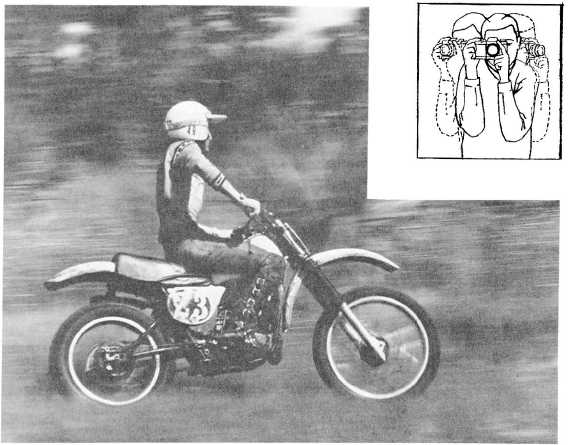PH3 Tim O’Neill
302.95
Figure 4-17.–Panning with a moving object.
can be tolerated before it becomes objectionable and
adjust your shutter speed accordingly. To determine
what forms an objectionable blurring of the image, you
must visualize how the photograph is going to be used.
An image of a contact print can be much blurrier than
an image that is magnified many times. A print that is
viewed up close must be much sharper than a print
viewed from a distance.
Once you know how the photograph is to be used,
you can determine the shutter speed required to produce
an acceptably sharp image. In some situations, it may
not be possible to produce an image that is completely
sharp. When you want a sharp image of a fast-moving
object, use the panning technique. When using the
panning technique, you move the camera and follow the
action of the subject until you make the exposure. This
method may blur the background but can provide a sharp
image of a moving object even at relatively slow shutter
speeds (fig. 4-17).
There are five factors that determine the distance an
image moves on the film during exposure. You must
consider these factors each time you photograph a
moving object. These five factors are as follows:
1. The lens-to-subject distance
2. The lens focal length
3. The speed of the object perpendicular to the lens
axis
4. The direction of movement
5. The exposure time
Whenever one of these five factors change, the
distance the image moves during exposure also changes.
The first four factors determine the speed that the image
moves across the film. The fifth factor limits the time it
is allowed to move, thereby limiting the distance of
image movement.
Subject movement on the film plane is greatest
when the subject is moving across the angle of view of
4-15


